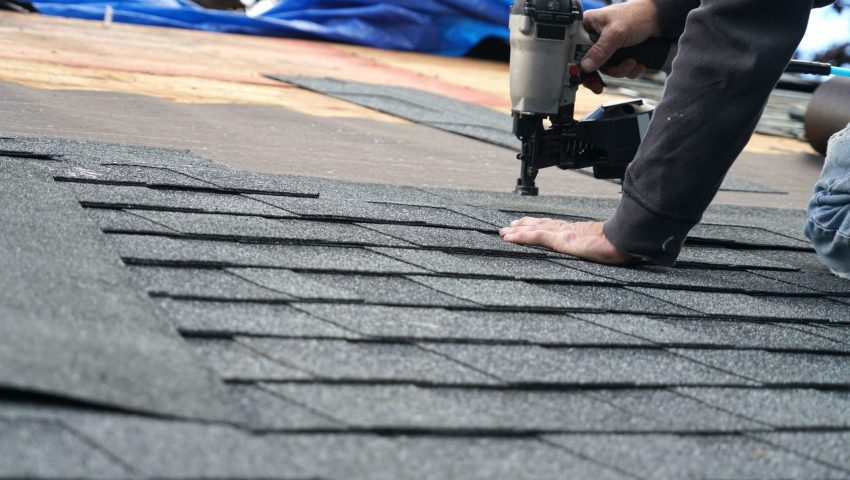How long does a typical roof last? It’s a question that every homeowner and property owner in Colorado Springs, Colorado, should ask themselves. Property owners and house owners should consider the importance of roof maintenance. Property managers can play a crucial role in ensuring proper roof maintenance.
The lifespan of your residential roof is crucial to the protection and overall value of your home. When undertaking a roofing project, it is important to hire a reputable roofing contractor or roofing company. They will ensure that your roof is installed or repaired properly, using high-quality materials such as wood shingles.
Understanding the factors that influence the lifespan of a roofing company can save you money and provide peace of mind when it comes to choosing the right roofing material. Whether you’re considering metal roofing systems or slate roofing, knowing how long each option is expected to last can help you make an informed decision.
Ready to extend the lifespan of your roofing system in Colorado Springs? Contact Peak to Peak Roofing today for expert guidance and top-quality materials. Buckle up as we delve into everything you need to know about the average lifespan of typical roofing systems. Discover how long a roof typically lasts, its life expectancy in years, and more.
Factors Influencing the Average Lifespan of a Roof
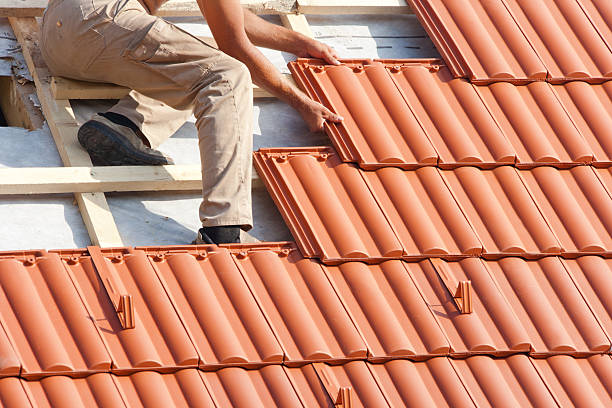
Roofing systems vary, from wood roofs to flat roofs, each with its own unique characteristics and longevity. Some popular options include architectural shingles, asphalt shingles, clay tiles, and slate tiles. By knowing the average lifespan of your specific roofing system, such as architectural shingles or asphalt shingles, you can plan for future maintenance or a full roofing project when needed. A longer-lasting roof made of metal roofing systems not only shields your home from the elements but also adds value and curb appeal. Whether you choose architectural shingles or solar roofing tiles, the right roofing material can make all the difference.
Climate Conditions
The weather in your area, including wind, has a significant impact on the lifespan of roofing systems. These conditions can impact the longevity of the shingles on your roof. In places like Colorado Springs, Colorado, where the weather can be harsh and unpredictable, roofs often face extreme temperature fluctuations, heavy snowfall, strong winds, intense sunlight, and the wear and tear of shingles and asphalt. It is important to have durable roofs that can withstand these conditions and protect the home and its appliances.
Choosing the right materials for your roof is crucial to maintaining its longevity and ensuring it can withstand the elements. Over time, factors like wind can cause wear and tear on your asphalt shingles or tiles. For example, the expansion and contraction caused by temperature changes can lead to cracks in shingles and tiles. This can be especially problematic for appliances and can be exacerbated by wind.
Proper Installation
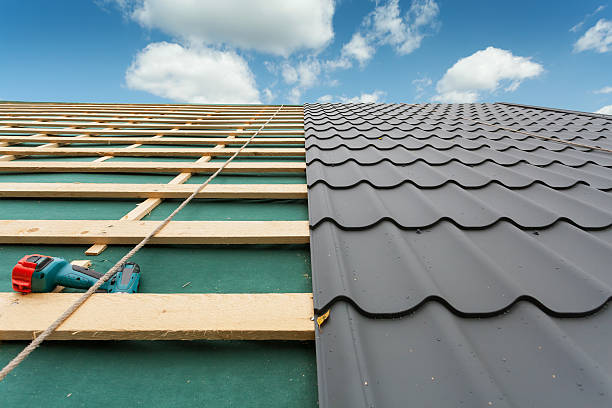
Proper installation of shingles or tiles is crucial for the longevity of your roof. It ensures that your property remains protected for years to come. A roof with quality tiles and shingles is more likely to withstand the elements and protect the property for many years. Hiring experienced professionals who follow industry best practices ensures that your shingles and tile roofs are installed correctly from the start, giving your home long-lasting protection for years.
Regular Maintenance
Regular maintenance also plays a vital role in extending the lifespan of your roof tiles and shingles. Over the years, proper maintenance can significantly increase the longevity of your property’s roof. Conducting routine inspections for roof leaks allows you to identify any issues with your roof shingles early on before they escalate into major problems. Regular inspections can help prevent the need for a roof replacement, especially for an asphalt shingle roof. Cleaning debris from your home’s roof, removing moss or algae growth on your property, and promptly repairing damaged shingles can prevent further damage to different types of roofs over the years.
Quality of Roofing Materials
The quality of the shingles used directly impacts the longevity of your property. Investing in high-quality shingles that are designed to withstand harsh weather conditions can significantly extend the life of your home’s roof. Cheaper or lower-quality materials may save you money initially but could result in frequent repairs or even premature replacement of your new asphalt shingle roof. It is important to schedule regular roof inspections to ensure their longevity and maximize their life expectancy.
For example, when it comes to roofing options for your property, asphalt shingles are a popular choice due to their affordability; however, they tend to have a shorter lifespan compared to other home roofing types, such as metal or tile roofs. Metal roofs are highly durable and can last 40–70 years or more with proper maintenance. This makes them an excellent choice for protecting your property and home from the elements, including shingles.
Age
The age of your roof is another factor that influences the lifespan of your shingles and the overall condition of your property or home. As roofs age, they become more susceptible to damage from exposure to the elements over time, including shingles. This can negatively impact the overall condition and value of the property. Older property roofs may develop leaks, loose shingles, or weakened structural integrity, reducing their ability to protect your property effectively.
Location and Environmental Elements
The location of your property and the environmental elements it is exposed to can impact the lifespan of your shingles. Saltwater and high humidity are particularly damaging to coastal areas, such as homes near the beach. These factors can expedite the deterioration of roofing materials like shingles. Likewise, areas with heavy rainfall or frequent storms may experience more wear and tear on roofs, especially shingles, compared to drier regions.
When determining how long your roof will last, it’s important to consider these factors, including the type of shingles used. By understanding the influences that affect the lifespan of your roof, such as regular roof inspection, material choices for an asphalt shingle roof or metal roof, and proper maintenance, you can make informed decisions about installation and ensure a long-lasting new roof.
Warning Signs: You Need a New Roof
Leaks or Water Damage to Your Ceiling

The presence of leaks or shingle-related water damage on your ceiling is one of the most obvious warning signs that you might need a new roof. If you notice water stains, discoloration, or peeling paint on your ceiling, it’s a clear indication that there is an issue with your shingles. Leaks can occur due to damaged shingles or worn-out flashing during a roof inspection.
These issues can arise from improper installation, which can affect the new roof’s overall quality and tile roof life expectancy. It’s crucial not to ignore these signs, especially when it comes to your tile roof or shingle roof. Ignoring these signs can lead to more significant problems, such as mold growth and structural damage, which can significantly impact the life expectancy of your roof and the condition of your shingles.
Curling, Cracked, or Missing Shingles
Another telltale sign that it’s time for a roof replacement is when you start noticing curling, cracked, or missing shingles. Shingles play a vital role in protecting your roof from external elements such as rain, snow, and sunlight.
Over time, exposure to extreme weather conditions like high winds and storms can cause shingles to deteriorate, reducing the roof’s life expectancy. If you see roof shingles that are curling at the edges or have cracks running through them, it’s a clear indication that they have reached the end of their lifespan. Similarly, if you find any missing shingles on your roof, it’s essential to address the issue promptly before further damage occurs.
Excessive Moss or Algae Growth

While some moss or algae growth on your roof may be normal in certain climates and conditions, excessive growth could indicate underlying shingle issues. Moss tends to thrive in damp environments and can trap moisture against the surface of your shingles. As time goes by, the moisture trapped on a shingle roof can lead to rotting and deterioration of the underlying materials, reducing the roof’s life expectancy.
Algae growth on shingles typically appears as dark streaks or stains caused by excess humidity. If you notice an abundance of moss or algae on your shingles, it’s advisable to have a professional roofer inspect them to determine if a replacement is necessary.
Understanding Different Roofing Materials and Their Lifespan
It largely depends on the type of roofing material used, such as shingles. Let’s explore some common roofing materials, like shingles, and their expected lifespans.
Asphalt Shingles
Asphalt shingles are one of the most popular choices for roofing in Colorado Springs, Colorado, and many other areas. They are affordable and widely available. However, shingle roofs have a relatively shorter lifespan compared to some other materials. Shingles are a popular choice for roofing. On average, asphalt shingle roofs, also known as shingles, can last anywhere from 15 to 30 years.
Pros:
- An affordable option for homeowners on a budget.
- A wide range of colors and styles are available.
- Easy installation process.
Cons:
- Prone to damage from extreme weather conditions
- It may require frequent repairs or replacements over time.
Metal Roofs
If you’re looking for a long-lasting roofing material that can withstand harsh weather conditions, metal roofs are an excellent choice. Metal roofing systems can last anywhere from 40 to over 70 years, depending on factors such as maintenance and the quality of the installation.
Pros:
- Exceptional durability and resistance against fire, wind, and hail.
- Energy-efficient, reflecting heat away from the building.
- Low maintenance requirements.
Cons:
- Higher initial cost compared to asphalt shingles.
- It may require professional installation due to its complexity.
Tile Roofs
Tile roofs are known for their durability and timeless aesthetic appeal. Made from materials like clay or concrete, tile roofs can last for several decades or even more than a century with proper care. In fact, it’s not uncommon to find tile roofs that have been standing strong for over 100 years!
Tile roofs come in two main varieties: concrete tiles and clay tiles. Both options offer durability and longevity. Concrete tile roofs have an average lifespan of 50–75 years, while clay tile roofs can last even longer, with lifespans exceeding 100 years in some cases. These types of roofs are known for their resistance to fire, rotting, and insect damage. However, it’s important to note that proper installation of the roof is crucial to ensuring its longevity.
Pros:
- Superior longevity compared to many other roofing materials.
- Excellent insulation properties.
- Resistant to rotting, insect damage, and fire.
Cons:
- Heavier than other roofing materials, requiring additional structural support.
- It is more expensive upfront cost and may require professional installation.
Flat Roofs: Drainage Challenges Lead to a Shorter Lifespan
Flat roofs are known for their modern aesthetic and ease of installation. However, they tend to have shorter lifespans compared to sloped roofs. One of the main reasons for this is the drainage challenges that flat roofs face. Without proper drainage systems in place, water can accumulate on the roof’s surface, leading to leaks and damage over time. In areas with heavy rainfall or snowfall, the challenges of maintaining a shingle roof become more pronounced.
Wood Shake Roofs: Natural Beauty with a Limited Lifespan
Wood shake roofs offer the timeless and natural beauty that many homeowners desire. However, it’s important to note that wood shake roofs typically have a shorter lifespan compared to other roofing materials. The average lifespan of a wood shake roof is around 20–30 years. Factors such as weather exposure, maintenance, proper ventilation, and having a shingle roof can impact its longevity. Regular inspections and repairs are essential to prolonging the life of a wood shake roof.
Slate Roofs: Renowned for Longevity
Slate roofs are in a league of their own. These durable roofing materials can last well over a century if properly maintained. Slate is resistant to fire, rotting, and insect damage, making it an excellent choice for homeowners looking for a long-lasting roofing option. While slate roofs may come with a higher price tag upfront, their exceptional durability makes them worth considering in the long run.
Other Roofing Materials
Apart from asphalt shingles, metal roofs, and tile roofs, there are several other roofing options available:
- Wood shingles have a roof life expectancy of around 20 to 25 years but need regular maintenance to prevent rotting or insect infestation.
- Fiber Cement Shingles: This durable roof material can provide a lifespan of around 25 to 40 years.
- Cedar Roofing: With proper maintenance, cedar roofs can last up to 30 years or more.
Average Lifespan of Roofs: What to Expect
There are several factors to consider. The type of material used plays a significant role in determining how long a roof will last.
Asphalt Shingle Roofs: 20–30 Years
Asphalt shingle roofs are the most common type of roofing material used in residential properties across Colorado Springs and beyond. These roofs typically have an average lifespan ranging from 20 to 30 years. However, it’s important to note that the lifespan of a roof can vary depending on factors such as roof maintenance, climate conditions, and installation quality.
While asphalt shingles may not have the longest lifespan compared to other roof materials, they do offer some advantages for your roof. Roofing options are relatively affordable and offer homeowners a wide range of colors and styles to choose from, allowing them to find an aesthetic that suits their preferences. Asphalt shingles are a popular choice for roof repairs or replacements if the roof is damaged.
Metal Roofs: Over 50 Years
Metal roofs have gained popularity in recent years due to their exceptional longevity. On average, metal roofs can last for over 50 years with proper maintenance and care. This extended lifespan makes them an attractive option for homeowners looking for a durable roofing solution that requires minimal upkeep.
One advantage of metal roofs is their ability to withstand extreme weather conditions, including heavy snowfall and hail storms common in Colorado Springs. They are also resistant to fire, rotting, insect damage, and roof damage. Furthermore, metal roofs reflect heat effectively, helping to reduce energy costs during hot summer months.
Tile Roofs: 50-100+ Years
Tile roofs are renowned for their longevity and timeless appeal. Made from materials like clay or concrete, tile roofs often outlast other roofing options, with an average lifespan ranging from 50 to over 100 years. Their durability and resistance to harsh weather conditions make them an excellent choice for homeowners seeking a long-lasting roof.
In addition to their exceptional lifespan, tile roofs offer other advantages. They are highly resistant to fire and can withstand high winds, making them suitable for areas prone to wildfires or strong storms. These roofs are specifically designed to protect against fire and wind damage, providing a secure and durable option for homes in wildfire-prone or storm-prone regions. Tile roofs also provide natural insulation, helping to regulate indoor temperatures and reduce energy consumption.
While tile roofs have numerous benefits, it’s important to consider their weight. These roofs require a sturdy structure capable of supporting the added load. Installation costs may be higher compared to other roofing materials due to the specialized expertise required.
Tips for Ensuring Longevity for Your Roof
Regularly Inspect Your Roof for Any Signs of Damage or Wear
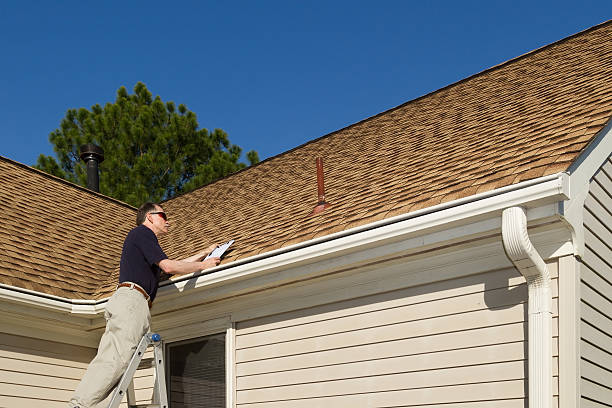
To maximize the lifespan of your roof, it’s crucial to regularly inspect it for any signs of damage or wear. Take the time to visually examine your roof, paying close attention to areas such as shingles, flashing, and gutters. Look out for missing or damaged roof shingles, cracks in the roof flashing, and any signs of water leakage on the roof.
- Pro Tip: Use binoculars to get a closer look at your roof without having to climb up a ladder.
Keep Gutters Clean and Ensure Proper Drainage to Prevent Water Damage
One key aspect of maintaining a long-lasting roof is keeping your gutters clean and ensuring proper drainage. Clogged gutters can lead to water accumulation on your roof, causing potential water damage and leaks. Regularly remove leaves, debris, and other obstructions from your gutters to allow rainwater to flow freely and prevent damage to your roof.
- Pro Tip: Consider installing gutter guards or screens on your roof to prevent debris buildup and make roof maintenance easier.
Hire Professional Roofers for Installation, Repairs, and Maintenance
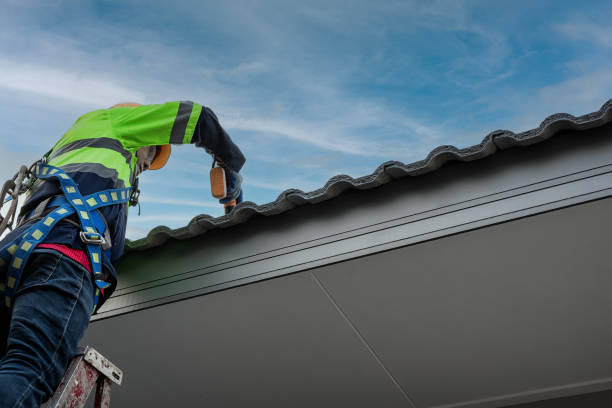
It’s best not to cut corners. Hiring professional roofers for installation, repairs, and maintenance can greatly extend the lifespan of your roof. Experienced roofing contractors like Peak to Peak Roofing have the knowledge and expertise needed to ensure that your roof is installed correctly and maintained properly over time.
- Pro Tip: Do some research before hiring a roofing company in Colorado Springs. Look for reputable roof contractors with positive reviews from satisfied customers.
Ensure Proper Attic Ventilation
Proper attic ventilation plays a crucial role in extending the life of your roof. Without adequate airflow in the attic space, heat can build up during hot summer months and cause premature deterioration of roofing materials. It’s essential to have roof vents installed in your attic that allow hot air from the roof to escape while bringing in fresh air from the outside.
- Pro Tip: Consider installing a solar-powered attic fan on your roof to improve ventilation and reduce energy costs.
Protect Your Roof from Potential Hazards
Taking proactive measures to protect your roof from potential hazards can significantly increase its lifespan. For example, if you live in an area prone to hailstorms, consider investing in impact-resistant shingles or a standing seam metal roof that offers superior protection against hail damage. Be mindful of any nearby trees that could pose a risk to your roof from falling branches, and trim them regularly.
- Pro Tip: Consult with a roofing contractor to determine the best roofing materials and protective measures for your specific property.
By following these tips for ensuring longevity for your roof, you can extend its lifespan and save yourself from costly repairs or premature replacement. Regular inspections, proper maintenance, professional workmanship, and protective measures are all key factors in keeping your roof in optimal condition for years to come.
How Long Does a Typical Roof Last?
Your roof is your home’s first line of defense against the elements, so it’s crucial to keep it in good condition. By being proactive and addressing warning signs promptly, you can extend the life of your roof and avoid costly repairs or replacements.
To ensure the longevity of your roof, make regular inspections and maintenance a priority. After severe weather events, it is important to clear debris from gutters to prevent any potential damage to the roof. Additionally, trimming overhanging branches can help protect the roof from falling objects. It is also crucial to check for any signs of damage on the roof itself. Consider scheduling professional roof inspections every few years to catch potential issues early on.
Ready to elevate your roofing experience? Choose Peak to Peak Roofing for top-notch service and quality that’s second to none! Contact us today to schedule your free roofing consultation and get one step closer to a safer, more beautiful home. Don’t wait; reach out now and let us take your roof to new heights!

